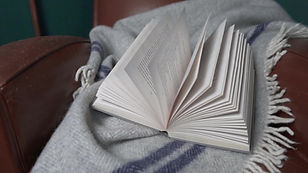

All Notes
This page contains all the notes in chronological order.

SUSY (Prof. Minwalla)
These are the notes to Prof. Shiraz Minwalla's 2021/22 online course on SUSY. The recordings of the lectures is available on YouTube via this link.
These notes will be updated periodically as the course goes on.
Superstring Perturbation Theory
These are the notes to Prof. Ashoke Sen's 2022 online course on Superstring Perturbation Theory. The course was given over zoom: the recordings and lecture notes made during teaching are available via Prof. Sen's website (under "0. Ongoing course on ‘Superstring perturbation theory’").
These notes will be updated periodically as the course goes on.

Toric Geometry
These notes aim to expand on the Complex Manifolds notes previously written. While those notes focues on Calabi-Yau manifolds from a differential geometry perspective, these notes we introduce the algebraic geometry techniques in order to study them. We show how to construct what are known as toric varieties from so-called fans. This approach is almost a trivial combinatorics game, and provides a very powerful and useful way to construct Calabi-Yau manifolds with desired properties.
Complex Manifolds
(Calabi-Yau)
Geometry has found immense use in the study of mathematical physics, and often provides a much more intuitive explanation to difficult physical problems. Perhaps the most obvi- ous/prominent example of this is general relativity. This is built on the mathematical con- struction of real manifolds and their associated structures. However, of course the natural extension of such tools would be to consider the complex counterpart, complex manifolds. These notes aim to do just that, giving a somewhat smooth transition from a real manifold to a complex manifold, in a hopefully pedagogical manner. The main goal is the construction of Calabi-Yau manifolds as hypersurfaces in complex projective spaces.

Twistor Theory
(Summer Projcet)
Abstract:
This project aims to introduce twistor theory at the level of a masters student in theoretical physics. We focus on the geometrical aspects of twistor theory, presenting the incidence relations and how they relate the geometry of complex Minkowski space, MC, to projective twistor space, PT: a point in MC corresponds to a line in PT; and two intersecting lines in PT (which define a point in PT) correspond to null separated points in MC. The main result is a reasonably detailed presentation of the linear Penrose transform; an isomorphism which relates the solutions of zero-rest-mass field equations with helicity n and the first Čech cohomology group Hˇ 1(PT±; O(−n − 2)) on projective twistor space. We also present several other neat twistor theory results, including a demonstration of how to encode the conformal structure of the spacetime in twistor space.
Amplitudes
These are my notes on the "Amplitudes" course taught at Durham University in 2020.
The course presents scatting amplitude calculations from a modern, spinor-helicity, formalism. In particular we focus on spin-1 purely gluonic amplitudes. The Parke-Taylor formula for MHV amplitudes and the BCFW recursion relation are derived.
By presenting amplitudes in this way, we highlight underlying symmetries that are non-manifest in the Feynman diagram approach.
The course was taught over 4 weeks and lasted 8 hours.

Supersymmetry
These are my notes on the "SUSY" course given at Durham University in 2020.
We work through the steps needed to construct SUSY QFTs, first presenting SUSY itself and discussing supermultiplets (irreps of the SUSY algebra). We then also present a method for constructing SUSY actions in order to obtain off-shell fields.
Comments/short sections on other related material is also included. For example the non-renormalisable theorem for superpotentials is briefly discussed.
I have typed up all the lectured material, and plan to come back and type up the non-lectured material on the non-linear sigma model and spontaneous SUSY breaking.
The course was taught over 4 weeks and lasted 16 hours.
Conformal Field Theory
These are my notes on the "CFT" course given at Durham University in 2020.
Part I of the course discusses D>2 CFTs and introduces a lot of machinery for studying CFTs. We also touch on Bootstrap techniques and their uses.
Part II of the course discusses D=2 CFTs and points out the differences that arise there. String theory is touched upon, but more as an example then a study.
The course was taught over 4 weeks and lasted 16 hours.

Quantum Field Theory II
These are my notes on the "QFT II" course given at Durham University in 2019. This course builds on the QFT I course and studies QFT from the path integral approach. We discuss renormalisation as well as showing how to quantise gauge (both Abelian and non-Abelian) theories in the path integral approach.
The course was taught over 4 weeks and lasted 16 hours. There was a strike during the course and 6 hours of the course were not taught. However, Dr. Iqbal gave us notes for the bits missed, so this additional material is also included.
Quantum Electrodynamics
These are my notes on the "QED" course given at Durham University in 2019. This course studies quantum electrodynamics, which is the QFT for the electromagnetic interactions.
This course is essentially a course on the renormalisation of QED and a large chunk of it is dedicated to doing 1-loop renormalisation.
The course was taught over 4 weeks and lasted 16 hours.

Symplectic Geoemtry & Classical Mechanics
These are the notes I've been making on Professor Tobias Osborne's Symplectic Geometry course given at Institüt für Theoretische Physik, Leibniz Universität Hannover in 2017-18. This course is available on YouTube.
I don't yet know the full content of the course (as I have only just started it) but will update this summary later.
These are a work in progress, and I shall update them as I go. As with my String Theory notes below, these might not be updated very often as I am rather busy with other courses, but will try keep up to date.
Quantum Field Theory I
These are my notes on the "QFT I" course given at Durham University in 2019. This is only a short course designed to introduce the concepts of path integrals. It doesn't actually deal with QFT itself, but instead studies QM in 1-dimension in terms of path integrals. The follow up course, QFT II, will deal with the actual QFT.
The course was taught over 4 weeks and lasted 8 hours.

Group Theory
(For Particle Physicists)
These are my notes on the "Group Theory (For Particle Physicists)" course given at Durham University in 2019. The course starts by defining groups, Lie groups and Lie algebras. We then discuss representations both both and Young-Tableux diagrams. We then briefly discuss Cartan's classification of Lie algebras.
The course was taught over 3 weeks and lasted 12 hours. (Should have been longer in my opinion!)
These are now done, but I might return later and add some more information.
Introduction To Field Theory
These are my notes on the "Introduction to Field Theory" course given at Durham University in 2019. The course is an introduction to quantum field theory and could just as easily be called QFT1 or something. It starts from the motivation for QFT, studies free theories, and then presents Feynman rules in order to study interacting field theory. Spin-0 and Spin-1/2 particles are addressed. Spin-1 will be addressed later in a QED course.
The course was taught over 4 weeks and lasted 24 hours.

The WE-Heraeus International Winter School on Gravity and Light
These are my notes on the International Winter School on Gravity and Light taught in 2015. It is a self contained course in the topic of general relativity. The videos are available via YouTube.
It is mainly taught by Dr. Frederic Schuller and I have typed up all of his lectures. I have also typed up the tutorials at the end of the document for question practice.
This course is brilliant and I highly recommend it to anyone wanting to learn GR, even if they have been introduced to it before as the level of detail is exceptional.
Thanks to Jon A. Gomez these notes have now been translated into Spanish! Click the corresponding button to see these. I extend a huge thank you to Jon for doing this!
String Theory
These are my notes on Dr. Shiraz Minwalla's highly entertaining String theory course. I have also used several of the results/descriptions given in Dr. David Tong's Part III Cambridge notes.
These are a work in progress, and I shall update them after each lecture or two is typed up. I prioritised other courses (i.e. Durham ones) over this one previously, but do intend to come back and finish these soon.

Quantum Theory
These are the joint notes by Simon Rea and myself on Dr. Frederic Schuller's course on Quantum Theory, available on youtube.
This course starts from a completely fundamental basis and builds up to a great working knowledge of quantum theory. Very little is assumed prior knowledge, however an understanding of linear algebra is highly useful.
The lectured material is all typed up, but I am starting to read up on Rigged Hilbert Spaces to include an extra lecture (as several people have requested in YouTube comments). This will be updated once typed up.
The notes have also been edited by Jonah Herr to make them more readable.
Simon also has notes on his blog for Dr. Schuller's other courses which I recommend looking at.
Space-Time Transformations of Dispersive, Nonlinear Materials
(Lancaster Thesis)
Abstract:
Transformation optics is a powerful mathematical tool which has found extensive use through the design of metamaterials. One of the main areas of interest is that of producing cloaks, in both space and time. Although the effects of transformation optics have been studied for the cases of a dispersive background material and a nonlinear background material separately, they are yet to be studied on a material that is both dispersive and non- linear. This thesis considers this case and we provide a formalism for taking space-time transformations of materials whose dispersion is consistent to that of a one-pole resonator and whose nonlinearity is given by that of a Kerr medium. The problem is solved using both integral and differential methods, and the generation of non-trivial nonlinearities are shown explicitly. The methodology is set up in a way that the extension to higher powered nonlinearities is simple, and examples of how one would do that are provided throughout.

My Thoughts On Black Holes
This is some notes I made on my interpretation of gravity and black holes. I have tried to formulate the problem at the manifold level (i.e. without using coordinates). The main approach is to look at light cones and killing vector fields produced by your gravitating mass. I argue that what gravity does is cause a 'relative rotation' between these two. I have tried to provide as much background information as possible to make it accessible to beginner relativists (as I myself am).
This is a work in progress.



















